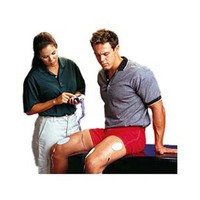 31st Jul 2015
31st Jul 2015
Everyday Uses for Neuromuscular Stimulation
For many years, neuromuscular stimulation was used solely by healthcare professionals such as physical therapists for treating patient’s injuries. Athletes have now discovered the benefits of neuromuscular stimulation not only in healing their injuries, but have started using this technique to help improve their muscular performance. Athletes have discovered what physical therapists have long known; neuromuscular stimulation is an effective tool for recovery and function.
Neuromuscular Stimulation Uses for Athletes
Athletes want to optimize their muscular qualities and the idea behind using neuromuscular stimulation is what works on weakened muscles also works on healthy muscles. A study published in the European Journal of Applied Physiology found that neuromuscular stimulation combined with voluntary dynamic exercise can improve sports specific skills and performance, including jump performance and sprint ability. Also part of the appeal of neuromuscular stimulation is the muscles selected can be given a very intense workout in a short amount of time. Even cooler is the workout can be customized to develop specific qualities depending on the program selected: endurance, strength or resistance.
Benefits of Neuromuscular Stimulation (NMES) for Athletes
- NMES speeds up recovery after an intense workout and limit aches and pains by stimulating the release of endorphins.
- NMES can be used to prevent injuries, for example twisted ankles, by reinforcing certain muscles (in this case the peroneal muscles of the leg).
- NMES can be used to relieve pain by stimulating the body’s release of its own natural analgesics (endorphins) , for example tendon problems or muscle contraction problems.
- NMES training results in a significant increase in muscle strength. According to the European study published in the European Study of Applied Physiology, maximal strength increased 27% after 8 weeks of training with NMES.
- NMES training increases the functionality of the muscle, activating more muscle fibers at lower force levels than exercise programs that need higher power levels to recruit those same muscles.
When time is limited for strength training, NMES provides diversity and variability in a training program for athletes. However, NMES isn’t just for high-level athletes. In order to combat the sedentary lifestyles that have become the norm, there are harmful side effects on the muscular system. Muscles lose power, tire easily and this muscular insufficiency can cause pain. People can use NMES to improve their comfort with everyday activities and their own exercise regimens, whatever the skill level. NMES can be used to relax muscles after a tiring day, remove the feeling of heaviness in the legs that fatigue causes and to tone their body.
The widespread applications for neuromuscular stimulation are exciting. A recent study from European Prospective Investigation into Cancer and Nutrition (EPIC) showed just moving from “inactive” to “moderately inactive” showed the largest reduction in death risk from heart disease or cancer, for people of all body weights, reducing the risk by 16-30%. The more we can inspire people to move their bodies, the more their risk of heart disease, cancer and early death is decreased. With the ability of neuromuscular stimulation to reduce pain, fatigue and recovery time, neuromuscular stimulation may just be the tool to inspire more folks with sedentary lifestyles to increase their activity level.






